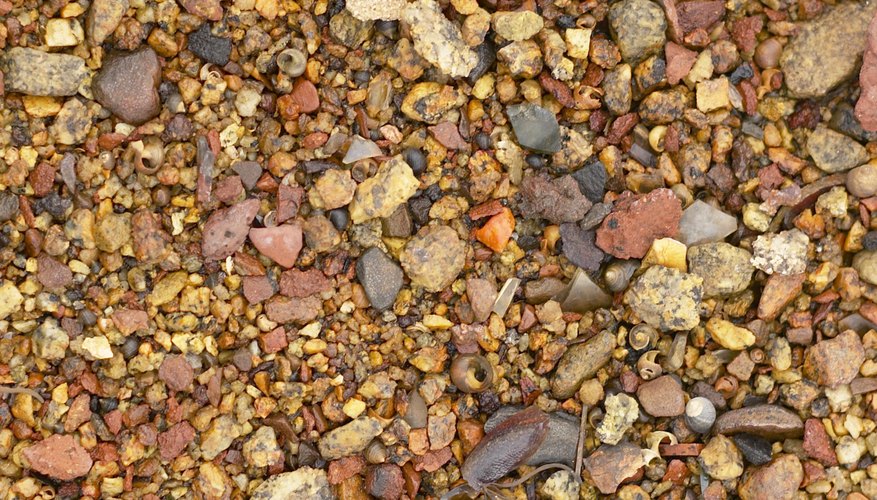Soil is composed of particles of rock and minerals that have been broken down by weathering, erosion and chemical and biological processes. The physical characteristics of different types of soil are determined by the grain of minerals present and the air and water particles in between the grains. The cohesive property of soil refers to its ability to stick together and retain a shape without external forces.
Composition
Clays and silts are cohesive types of soil. They tend to have fine grains and a high water content. Sand and gravel are non-cohesive types of soil. They have large or irregular grains and do not have a natural tendency to bond or stick together. Most soil samples will not be regular. They will be a composite of different types of soil. A high concentration of clay or silt can still produce cohesive soil, even where non-cohesive elements such as sand or gravel are present.
- Clays and silts are cohesive types of soil.
Cohesion
Cohesion is the force that holds together particles within the soil. Cohesive soils have a tendency to bond and retain a shape. They have an ability to be molded which is known as "plasticity." They are difficult to break apart when dry. Non-cohesive soils have little to no internal cohesive strength. They will not retain a shape unless confined or affected by external forces.
- Cohesion is the force that holds together particles within the soil.
Consistency
Non-cohesive soil consists of large or irregular particles with little to no clay to bond the mass together. Environmental conditions such as wind and rain can change soil consistency by introducing more air and water to the mix. Wet sand can appear to have more cohesion than dry sand but this is a result of the viscosity of the water molecules rather than the soil itself.
Building use
The cohesive properties of soil affect its performance when used as a foundation material beneath structures such as buildings and roads. Non-cohesive soils such as sand can bear loads, but should be contained to retain a shape, according to the University of the West of England. Some clays can cause problems as the pressure exerted by the weight of a building forces out water and compresses soil. This can cause movement in the building above.
- The cohesive properties of soil affect its performance when used as a foundation material beneath structures such as buildings and roads.
- Some clays can cause problems as the pressure exerted by the weight of a building forces out water and compresses soil.
